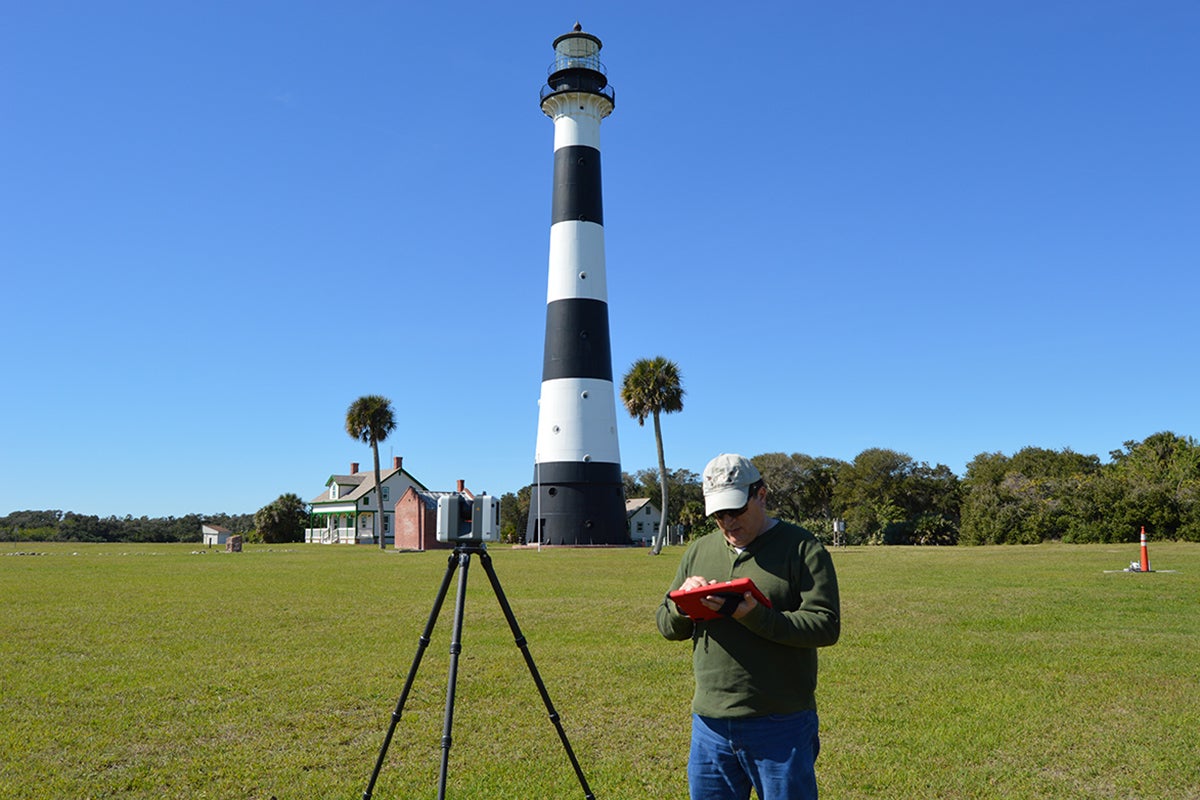With an ever-changing landscape, Florida’s rich architectural history can quickly vanish in a blink of an eye, but a University of Central Florida research team is working to digitally preserve it one historic place at a time.
They’re doing so using an advanced, 3D laser scanner that’s accurate down to a millimeter of measurement, and the data generated can be used to not only virtually recreate a structure but also to rebuild it if it’s ever destroyed.
The team, ChronoPoints, is part of UCF’s Institute for Simulation and Training and is led by Lori Walters, a research associate professor at IST and UCF’s Department of History.
“Think about the Notre Dame Cathedral,” Walters says. “So here you have this cathedral that everybody assumed would be there forever, but then there was the major fire in 2019. However, there was a historian who was taking laser scans of Notre Dame, and his laser scans may be able to help restore it.”
ChronoPoints has scanned more than 30 buildings and large artifacts since it began in 2014, including the Mercury Control Center at Kennedy Space Center, the Cocoa Beach Glass Bank, Fort Lauderdale’s Pier 66 tower, New Smyrna Sugar Mill Ruins, and most recently the Cape Canaveral Lighthouse, St. Augustine Lighthouse, House of Refuge Museum in Stuart, and the Jack Kerouac House in College Park.
They often work with undergraduate and graduate students from a range of disciplines, including engineering and archaeology. The students learn laser-scanning skills needed to complete their research projects, such as scanning bridges or archaeological sites, which makes them more competitive in the workforce.
The places they scan often have historical significance to Florida or to a community and are in danger of demolition or modification. Some scans provide instruction to students or test the equipment’s ability, as in the case with the recent lighthouse scans, in which the researchers determined that they could successfully scan an extremely tall and narrow structure with a new scanner.
Walter’s background is in U.S. history, but she was inspired to begin digitally preserving sites after witnessing the decay of Launch Complex 14 at Cape Canaveral Air Force Station. Astronaut John Glenn was blasted into space from the complex to become the first American to orbit the Earth.
The launch complex inspired her to begin a project with UCF IST called Shadows of Canaveral. The project recreated the launch complex virtually and digitized photographs, ephemera and oral histories, including oral histories from Cal Fowler, the man who pushed the button that launched astronauts Scott Carpenter, Wally Schirra and Gordon Cooper into space, and whose personage and stories were digitized for the project.
ChronoPoints projects have since continued to not only digitize structures, but to also collect oral histories, blueprints, photos and more.
“Our focus is to try to gain as much information as we can so we can present a life history of a structure,” Walters says.
The researchers perform the scans by setting up a tripod-mounted laser scanner in different locations around a structure. The scanner sends a laser beam out that measures the amount of time it takes for the beam to be emitted from the scanner, hit the target and return. Then it collects photographs of the scan area. This generates a rich amount of data points that can be compiled to digitally recreate the structure.
Walters said the work is important beyond just preservation of the past.
“It provides a cultural identity,” Walters says. “It lets you know where we came from.”
The work is funded through grants and the overall ChronoPoints budget. Many of the digital renderings are available for viewing on the ChronoPoints website, through the “Projects” tab.
Walters received her doctorate in history from Florida State University and joined UCF’s Department of History, which is part of UCF’s College of Arts and Humanities, in 2002 and IST in 2005.




